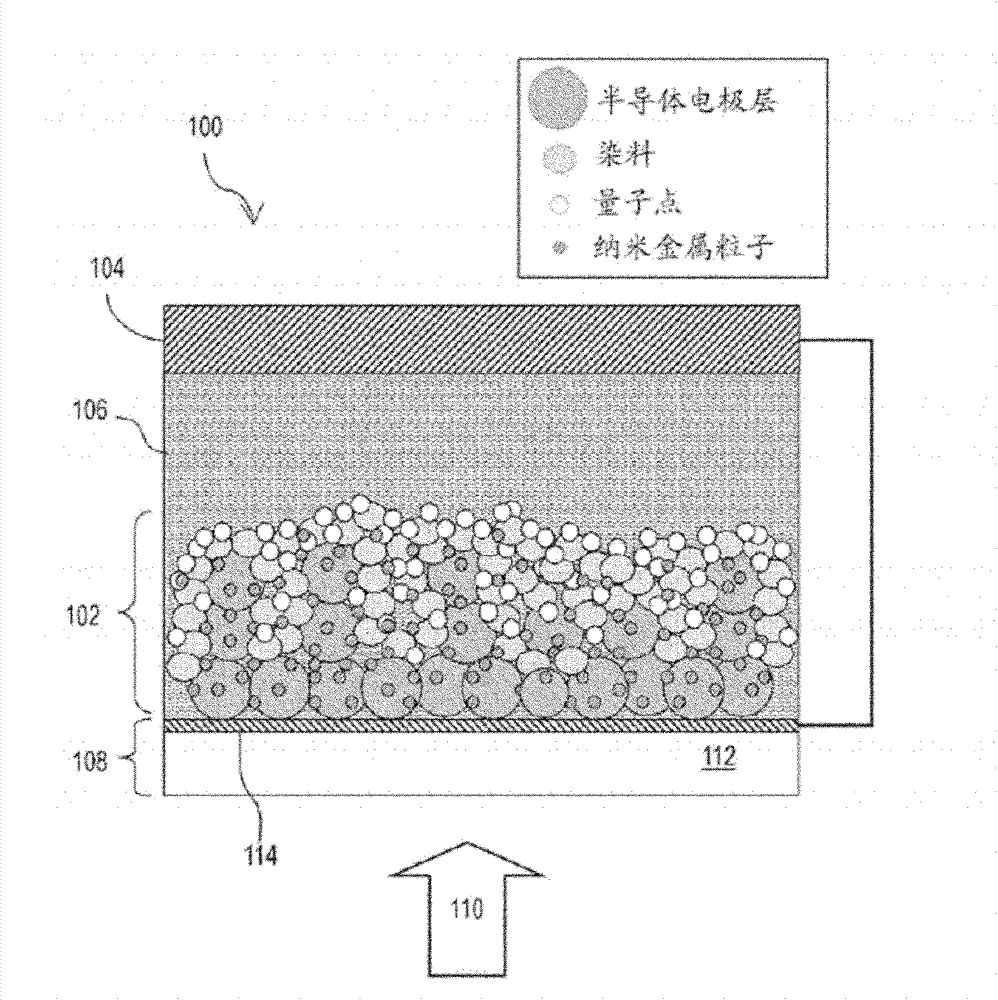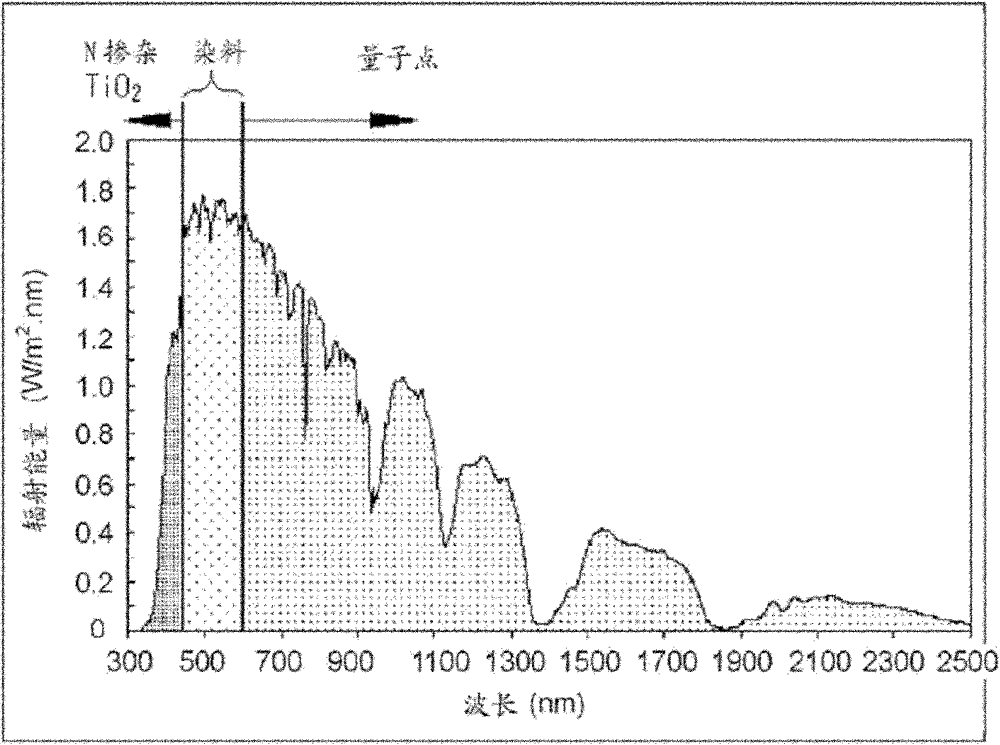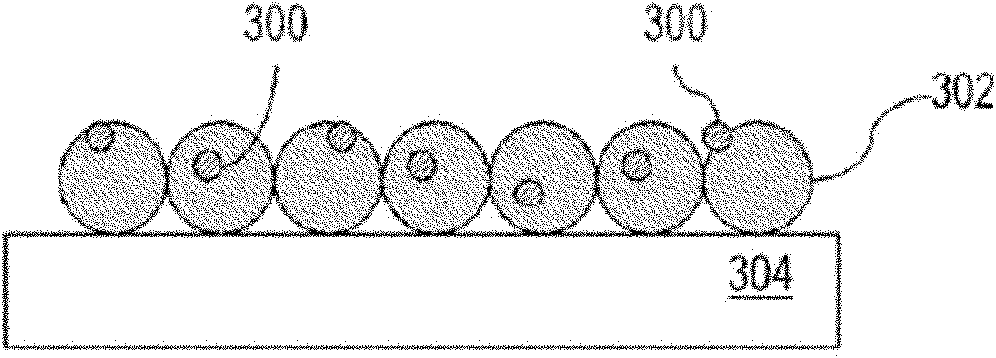Quantum dot dye-sensitized solar cell
A technology of solar cells and dye sensitization, applied in the field of dye-sensitized solar cells, can solve the problems of limited improvement of battery conversion efficiency, achieve the effects of improving conversion efficiency, enhancing light absorption effect, and increasing effective utilization rate
- Summary
- Abstract
- Description
- Claims
- Application Information
AI Technical Summary
Problems solved by technology
Method used
Image
Examples
experiment example 1
[0056] Experimental Example 1: Making TiO 2 / quantum dots / nano metal particles / quantum dot dye-sensitized solar cells of N719 dye, the steps are as follows:
[0057] Step 1. Preparation of working electrode: prepare titanium dioxide slurry, prepare a titanium dioxide electrode layer (thickness 13 microns) on the transparent conductive substrate (FTO / glass) by doctor blade coating, and send it to a high-temperature furnace for sintering at 450°C for 30 minutes.
[0058] Step 2. Soak the working electrode of step 1 in 40mM TiCl 4 After soaking at 70°C for 30 minutes, it is sent to a high-temperature furnace for sintering at 500°C for 60 minutes.
[0059] Step 3. Prepare nano-gold material, and prepare nano-gold on the electrode layer in step 2 by coating.
[0060] Step 4. Prepare quantum dot (CIGS) material, and prepare the quantum dot material on the titanium dioxide electrode layer in step 3 by coating.
[0061] Step 5. Put the working electrode prepared in step 4 into a hi...
experiment example 2
[0067] Experimental Example 2: Making TiO 2 / quantum dots / N719 dye quantum dot dye-sensitized solar cells
[0068] The steps of Experimental Example 1 above were repeated, but the step of adding metal nanoparticles was not included.
experiment example 3
[0069] Experimental Example 3: Making TiO 2 / Nanometal Particles / Dye-sensitized solar cells with N719 dye
[0070] Repeat the steps of the above experimental example 1, but do not include the step of adding quantum dots.
[0071] Measurement
[0072] Figure 5 It is a graph of photocurrent density and voltage (I-V) of the dye-sensitized solar cells of Experimental Examples 1-3 and Comparative Example. Table 1 below records the measured data of Experimental Examples 1-3 and Comparative Example and calculates the cell efficiency of the solar cell.
[0073] Depend on Figure 5 As can be seen from Table 1, the efficiency of the quantum dot dye-sensitized solar cell of Experimental Example 1 is significantly higher than that of Comparative Example and Experimental Examples 2-3.
[0074] Table I
[0075]
PUM
| Property | Measurement | Unit |
|---|---|---|
| particle diameter | aaaaa | aaaaa |
| thickness | aaaaa | aaaaa |
| percent by volume | aaaaa | aaaaa |
Abstract
Description
Claims
Application Information
 Login to View More
Login to View More - R&D
- Intellectual Property
- Life Sciences
- Materials
- Tech Scout
- Unparalleled Data Quality
- Higher Quality Content
- 60% Fewer Hallucinations
Browse by: Latest US Patents, China's latest patents, Technical Efficacy Thesaurus, Application Domain, Technology Topic, Popular Technical Reports.
© 2025 PatSnap. All rights reserved.Legal|Privacy policy|Modern Slavery Act Transparency Statement|Sitemap|About US| Contact US: help@patsnap.com



